What is Bandhani? A Journey Through India’s Vibrant Tie-Dye Heritage
A fabric that carries centuries of tradition in every fold, a craft shaped by skilled hands, passed down through generations. This is Bandhani, a textile with a canvas of stories, dyed and knotted into existence. It is a craft where tradition meets the unexpected, where every tiny dot holds a world of patience, heritage, and an artist’s quiet defiance against time.
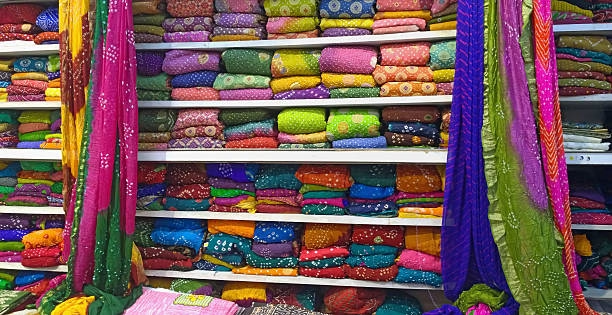
This traditional tie-dye craft, derived from the Sanskrit word “bandh,” meaning “to tie,” is more than a technique; it is a language of knots, dyes, and patterns that speak of love, celebration, and identity. To wear this heritage textile is to wear history, to drape oneself in the whispers of artisans who have poured their hearts into every pull of the thread, every dip into the dye vat.
But what makes Bandhani so extraordinary? Why does it continue to captivate us in an age of mass-produced fashion? Let us journey into the heart of this craft, and discover its origins, its process, and its enduring legacy.
The Ancient Roots of Bandhani: From Indus Valley to Royal Courts
This unique tie-dye technique, characterized by brilliant designs created by plucking the fabric with fingernails into numerous tiny bindings. It is more than just a craft that carries a 5,000-year-old legacy. The earliest evidence of tie-dye techniques can be traced back to the Indus Valley Civilization (circa 4000 B.C.), where excavations revealed textiles with intricate resist-dyeing patterns. The craft gained prominence in historical texts, including the 6th-century paintings in the Ajanta Caves, which depict figures adorned in Bandhani-like dotted fabrics.
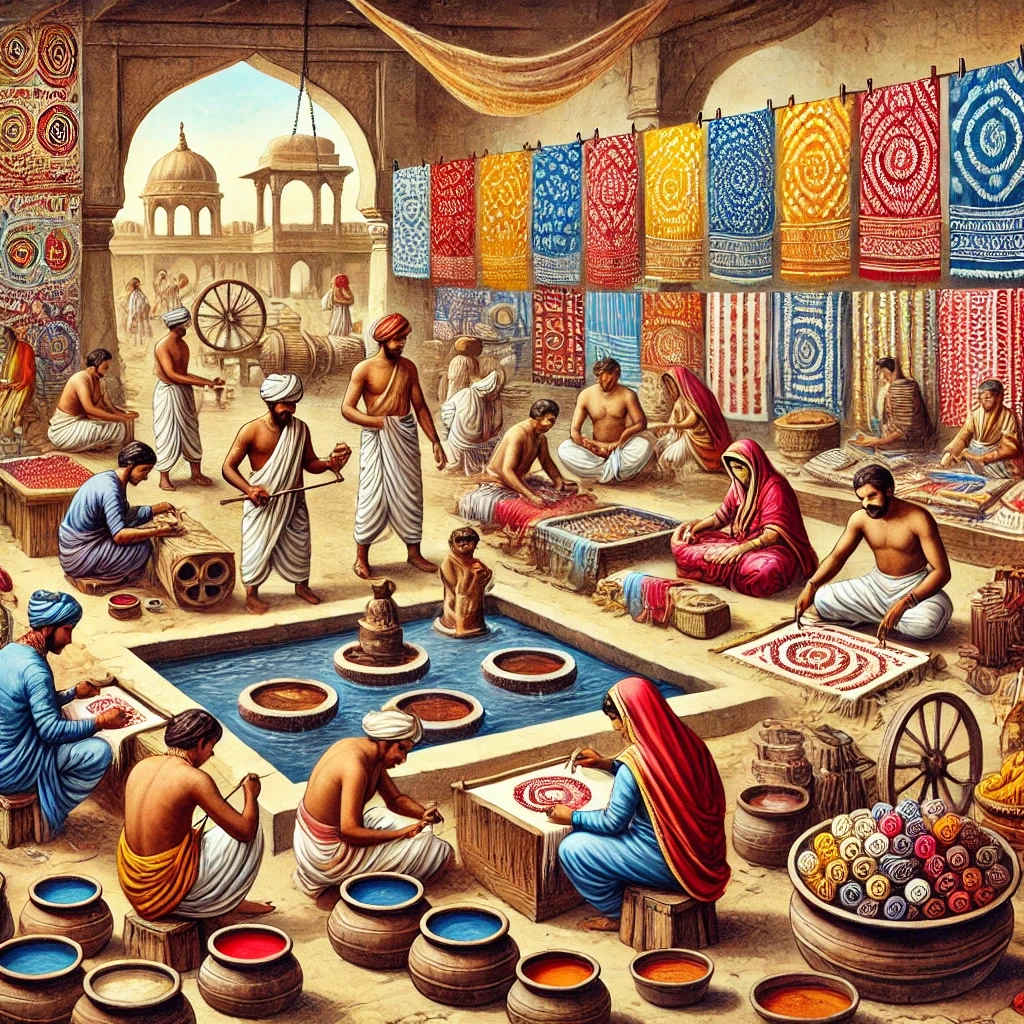
Over time, the art form evolved under the patronage of Rajput and Mughal rulers, finding its place in royal wardrobes as a symbol of prestige and artistry. This long-standing tradition cements Bandhani as one of the world’s oldest surviving textile crafts.
Historical texts reveal that the origins of the exquisite Bandhani saree can be traced back to the era depicted in Bana Bhatt’s renowned work, the “Harshacharita,” which mentions its elegant use during a grand royal marriage. It was commonly believed that wearing a Bandhani saree could usher in a bright and prosperous future for the bride. The vibrant murals adorning the walls of the Ajanta Caves serve as a testament to the rich legacy of these distinctive sarees, showcasing their brilliant designs and cultural significance. Over the centuries, skilled dyers have engaged in a fascinating journey of experimentation, skillfully combining various natural and synthetic elements to create the unique patterns and vibrant colors that make Bandhani sarees truly exceptional.
Significance of This Tie-dye art in different regions
Bandhani is variously referred to as Bandhej Saree, Bandhni, Piliya, and Chungidi in Tamil and local dialects. It is not a monolithic art form, it takes on different identities based on the region where it is crafted. Each area has its own signature patterns, color palettes, and tying techniques:
Gujarat: Known for its vibrant red and yellow combinations, Gujarat’s Bandhani is often seen in traditional Gharchola sarees, worn by brides as a symbol of prosperity and blessings.
Rajasthan: The Leheriya technique, a close cousin of Bandhani, features wave-like patterns symbolizing monsoon rains. Rajasthani Bandhani often incorporates bright hues like pink, saffron, and royal blue.
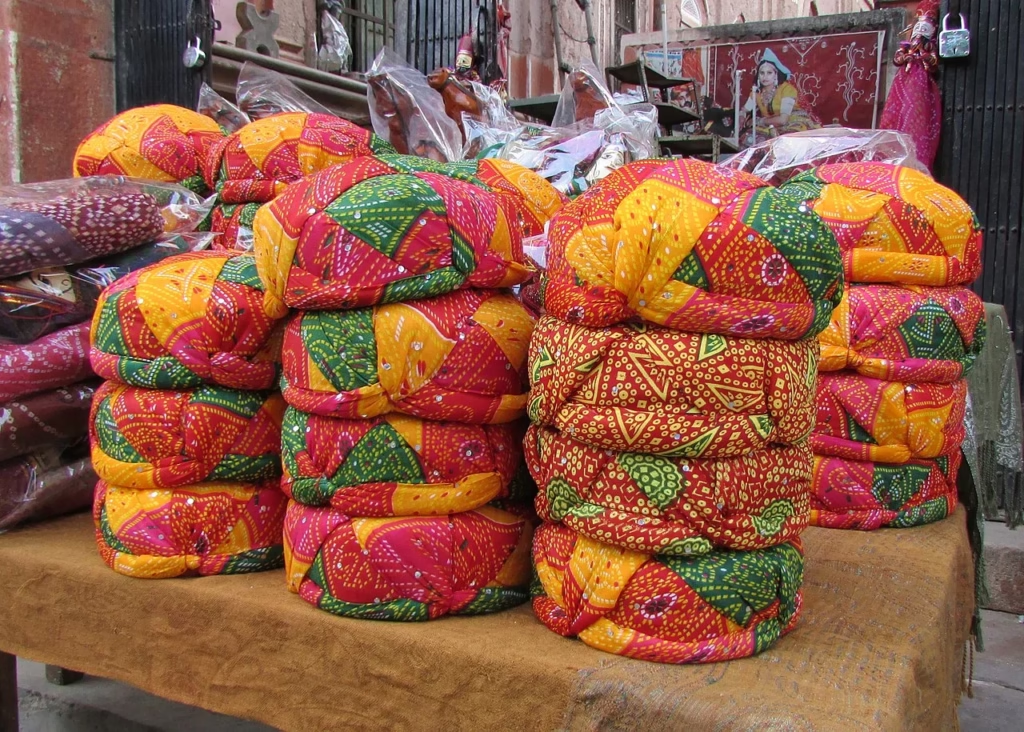
Tamil Nadu (Sungudi): The Tamil Nadu version of this Tie-dye craft, called Sungudi, is characterized by smaller, finer dots arranged in intricate patterns, often in deep shades of maroon, black, and mustard.
Sindh (Pakistan): In Sindh, Bandhani is known as chunri and is traditionally worn by women during weddings and religious ceremonies, featuring rich red and deep green hues with white dot patterns.
The tying techniques used in its creation include Mothra, Ekdali, and Shikari, which vary based on how the cloth is bound. The completed products are known by different names, such as Khombi, Ghar Chola, Patori, and Chandrokhani.
This age-old textile art roots date back over 5,000 years, evolving under the Khatri community into a symbol of cultural identity and artistic mastery. The Khatris, traditional dyers, and printers have preserved this art form, treating it not only as a profession but as a cherished legacy passed through generations. Each family within this community boasts unique patterns, techniques, and narratives that make their creations distinct.
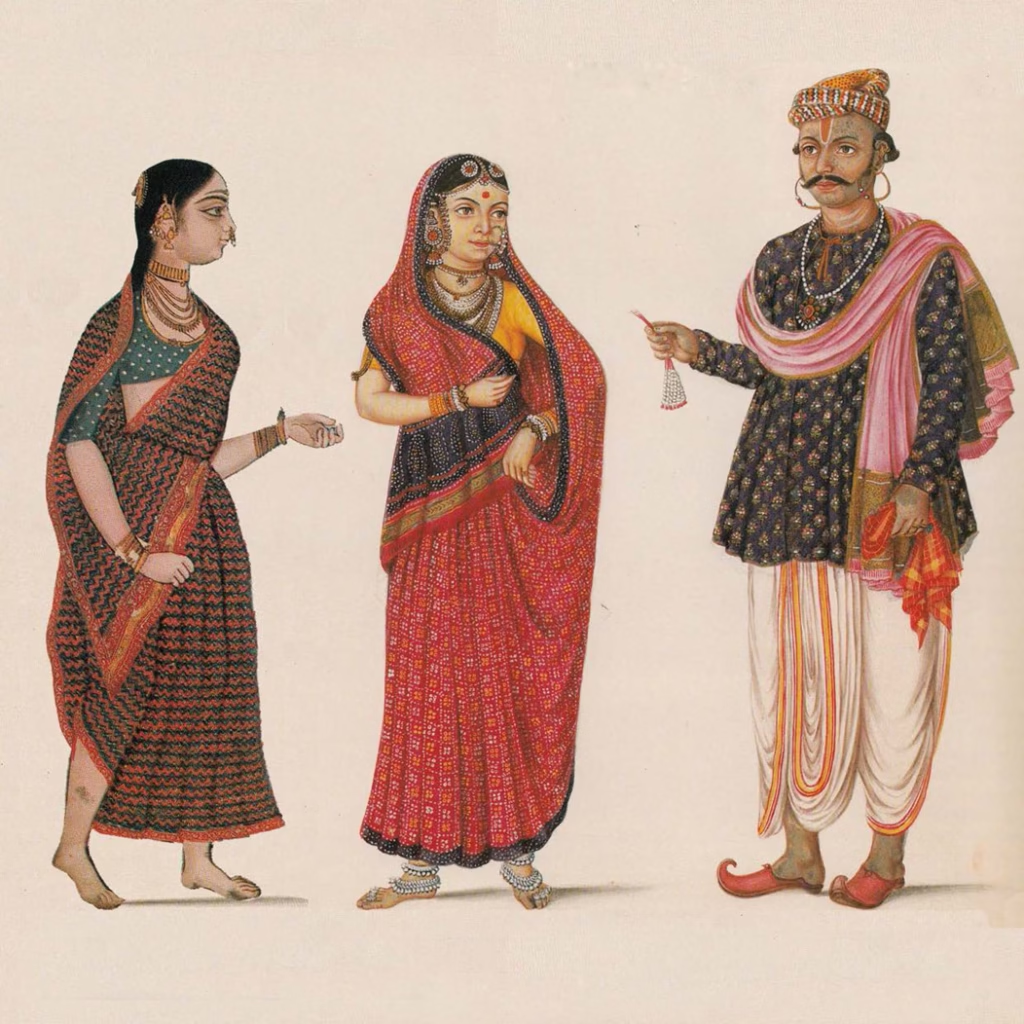
It has been referenced in ancient literature and folklore and was favored by royalty, with kings and queens wearing Bandhani sarees and turbans for festive occasions. More than just a textile, this art form is woven into the cultural fabric of India. It plays a significant role in religious and joyous occasions, symbolizing joy, prosperity, and tradition:
Weddings: Brides in Gujarat and Rajasthan wear red or maroon Bandhani sarees, believing they bring good fortune and a prosperous married life. The dots in the fabric represent fertility and blessings.
Navratri: During this nine-day festival, women in Gujarat wear colorful Bandhani outfits while performing Garba and Dandiya Raas, celebrating femininity and devotion.
Teej & Gangaur: Women dress in Bandhani sarees to pray for their husband’s well-being and marital happiness, reinforcing the textile’s deep-rooted significance.
Sindhi & Rajasthani Turbans: These tie-dyed textiles are also worn by men, particularly in the form of turbans (safa), signifying status, respect, and celebration.
Today, this textile continues to signify pride and tradition, particularly in the arid landscapes of Kutch and the lively streets of Jaipur.
The Making of This Heritage Textile – The Delicate Dance of Knots and Dyes
The process of creating Bandhani is both simple and profound. It begins with a piece of fabric, usually cotton, silk, or chiffon, stretched taut over a wooden frame. The artisan, with hands moving like a composer’s, begins tying tiny knots across the fabric. Each knot preserves the color beneath it, ensuring that authentic patterns emerge after dyeing.
The tying is done with a fingernail or a small metal tool, creating patterns ranging from delicate dots to elaborate geometric designs. These designs such as:
Ekdali (single dot) – Symbolizing purity and simplicity, it reflects minimalism and elegance.
Boond (small dot): Representing water droplets, it signifies life, prosperity, and renewal.
Kodi (teardrop): Associated with emotions and transitions, it captures moments of change and growth.
Shikari (hunting scene): A design traditionally worn by brides, symbolizing new beginnings and adventures.
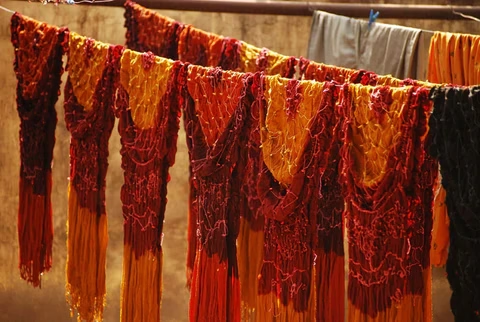
Once the fabric is tied, it is dipped into a vat of dye. The dye seeps into the untied portions, coloring the fabric while leaving the knotted areas untouched. This process is repeated multiple times with new knots and colors, resulting in a breathtaking kaleidoscope of hues.
The final step is the unveiling. As the knots are untied, hidden patterns emerge like whispered secrets, revealing a textile pulsating with color and energy.
The magic of Bandhani lies in its ability to create mesmerizing patterns through the resistance of color. Traditional artisans use natural dyes derived from plants and minerals, which are not only eco-friendly but also produce rich, long-lasting colors. Here’s how:
Indigo: Extracted from the indigo plant (Indigofera tinctoria), this dye gives the deep blues commonly seen in Bandhani textiles. Indigo molecules bind strongly to natural fibers, making the color resistant to fading.
Turmeric & Pomegranate Rind: These are used to create stunning yellows and ochres, adding a warm earthiness to Bandhani fabrics.
Madder Root: Produces brilliant reds and pinks, historically used in Bandhani sarees worn by brides.
Iron & Jaggery Mixtures: These are used to achieve deep blacks and browns, often used for contrasting patterns.
The science of dyeing ensures that colors remain vivid for years, even after multiple washes, unlike synthetic dyes that fade over time.
The Artisans Behind Bandhani: Guardians of a Heritage
Bandhani is a craft of resilience, dedication, generational expertise, and the silent language of color and pattern. Each fold of the fabric holds meaning, each hue a reflection of life’s milestones, and each dot a story waiting to be told.
Despite its beauty, the artisans face challenges from mass production and dwindling wages, threatening this heritage.
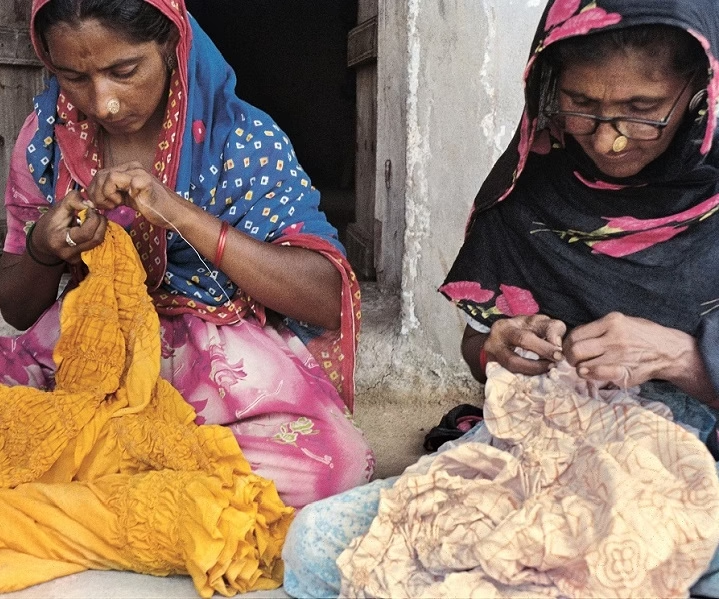
Yet, there is hope. Organizations and initiatives like “Save the Weave” and “Gaatha” are working to preserve Bandhani, providing artisans with fair wages and a platform to showcase their work. By supporting these initiatives, we can ensure that Bandhani continues to thrive, not just as a craft, but as a way of life.
Bandhani in Modern Fashion: From Runways to Street Style
Today, this particular art blends tradition with contemporary fashion, embraced by designers for its sustainable appeal. In an age where fast fashion dominates, it stands out as a symbol of sustainable craftsmanship. Unlike mass-produced textiles, Bandhani is made using minimal machinery, natural dyes, and ethical labor practices.
Handmade & Ethical Production: Each of its fabric is created by artisans, sometimes taking weeks or months to complete a single piece. Unlike factory-made textiles, this supports skilled craftsmanship and prevents exploitation.
Eco-Friendly Dyes: Many artisans still use plant-based dyes, reducing chemical pollution and water wastage in comparison to synthetic textile industries.
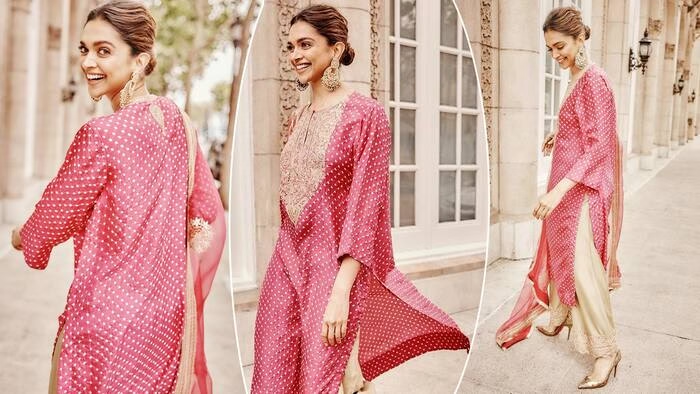
Minimal Waste: The tying and dyeing process ensures that every inch of fabric is used efficiently, minimizing waste in the production cycle.
Durability Over Disposability: Unlike cheaply made garments that wear out quickly, a well-made Bandhani saree or dupatta lasts for decades, making it a more sustainable choice.
By choosing these handcrafted textiles, consumers contribute to preserving a time-honored tradition while promoting slow fashion and conscious consumerism.
Celebrities have also played a role in popularizing Bandhani. Bollywood actresses like Deepika Padukone and Priyanka Chopra have been spotted wearing Bandhani outfits, bringing this traditional craft into the global spotlight.
However, it is more than just a trend, it is a movement. It calls on us to slow down, appreciate the beauty of handmade craftsmanship, and reconnect with our cultural roots. In a world dominated by fast fashion, Bandhani stands as a beacon of hope, proving that true beauty lies in the imperfect, the handmade, the human.
How to Style Bandhani: A Modern Twist on Timeless Beauty
Owning a piece of this handcrafted tradition is not just about adding a vibrant textile to your wardrobe, it is about embracing a legacy. Here’s how you can weave the magic of this art into your everyday life:
Effortless Elegance: Pair a Bandhani saree with a plain blouse for a look that’s both timeless and sophisticated. Let the fabric speak for itself, its patterns telling a story of tradition and grace.
Casual Chic: Drape a Bandhani dupatta over a simple kurta or jeans for a casual yet stylish look. The vibrant colors add a pop of personality to any outfit.
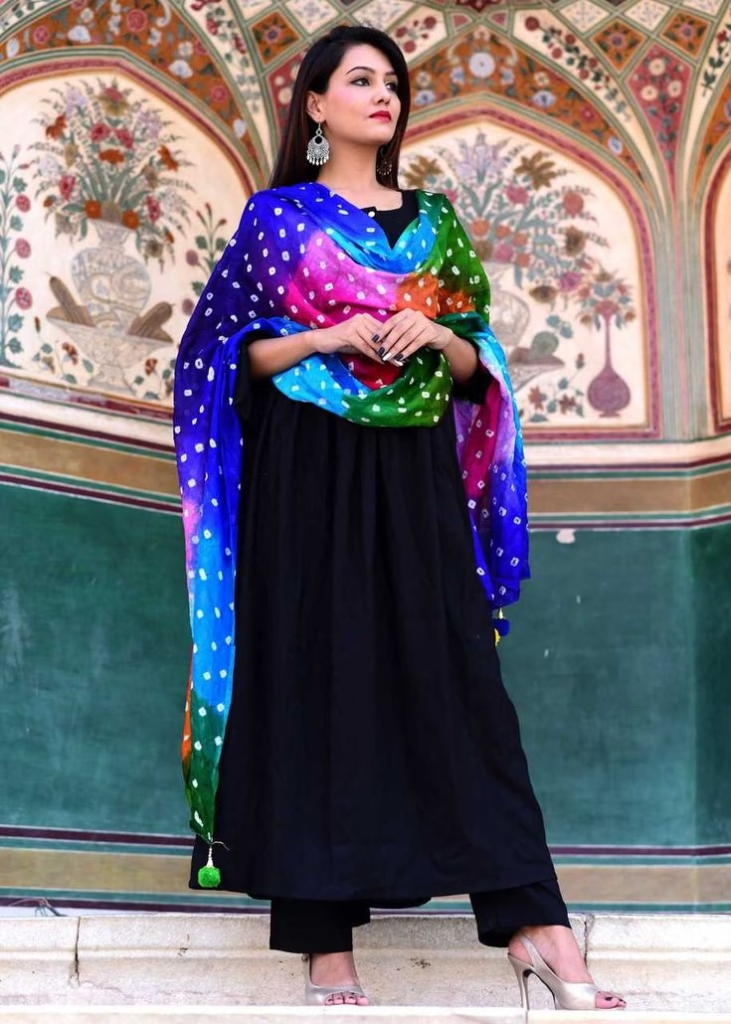
Global Glam: Incorporate Bandhani into modern silhouettes like dresses, skirts, or even jackets. The juxtaposition of traditional patterns with contemporary cuts creates a look that’s uniquely yours.
Accessorize with Intention: Use Bandhani scarves or stoles to add a touch of color to neutral outfits. Whether tied around your neck, draped over your shoulders, or wrapped around your bag, Bandhani instantly elevates your style.
How should I care for and wash Bandhani fabrics?
Proper care is essential to maintain the vibrancy of Bandhani textiles. It’s recommended to dry clean new Bandhani sarees for the first few washes to preserve their colors and quality. If opting to wash at home, use cold water and a mild detergent suitable for delicate fabrics. Avoid wringing or twisting the fabric, and air-dry in a shaded area to prevent color fading.
What is the cultural significance of Bandhani patterns and colors?
Bandhani patterns and colors hold deep cultural meanings. For instance, in Gujarat and Rajasthan, red Bandhani sarees are traditionally worn by brides, symbolizing prosperity and marital bliss. The intricate tie-dye patterns, such as dots, waves, and stripes, are not just decorative but also represent joy and celebration in various regional contexts.
How can I identify authentic Bandhani fabric?
Authentic Bandhani fabric is characterized by vibrant colors and unique tie-dye patterns, resulting from the meticulous process of tying the fabric tightly at various points before dyeing. Genuine Bandhani is often crafted from breathable materials like cotton or silk, enhancing both comfort and durability. Examining the uniformity of colors and the precision of finishing can also indicate authentic craftsmanship.
What are the different types of Bandhani patterns?
andhani features a variety of patterns, each with unique symbolism. Common designs include:Ekdali or Bundi: A single dot pattern symbolizing simplicity.
Boond: Small dots with darker centers, representing water droplets.
Kodi: Tear-shaped drops symbolizing emotions and transitions.
Trikunti: Patterns of circles in clusters of three.
Dungar Shahi: Mountain-like patterns.
Leheriya: Wave patterns symbolizing the flow of water.
Which regions in India are famous for Bandhani craftsmanship?
Bandhani is predominantly practiced in the western states of India, especially Gujarat and Rajasthan. Cities like Jaipur and Jodhpur are renowned for their vibrant Bandhani sarees and dupattas, adorned with intricate motifs and vibrant colors. Each region has its unique style and patterns, reflecting local traditions and cultural heritage.
How You Can Support Artisans and Keep This Tradition Alive
Bandhani is a craft, it is a love letter, to the earth, to the sky, to the human spirit. It reminds us that beauty lies in the handmade, the imperfect, the human. To ensure its survival for future generations, we can:
Buy authentic Bandhani from artisan collectives and ethical brands.
Educate and spread awareness about the value of handmade textiles.
Support initiatives that empower artisans and protect their livelihoods.
As we navigate the complexities of the modern world, let us not forget the whispers of the past. Let us honor the hands that have worked for generations, the colors that have bled into one another, and the stories that have been woven into every knot.
Bandhani serves as a reminder that true beauty lies in heritage, craftsmanship, and the hands that weave history into every knot. And it is up to us to preserve it, cherish it, and pass it on. So let us tie the knots, dip the dyes, and unveil the magic, for ourselves and for generations to come.
To learn more about India’s artistic culture and values, you can explore the folkcanvas website.

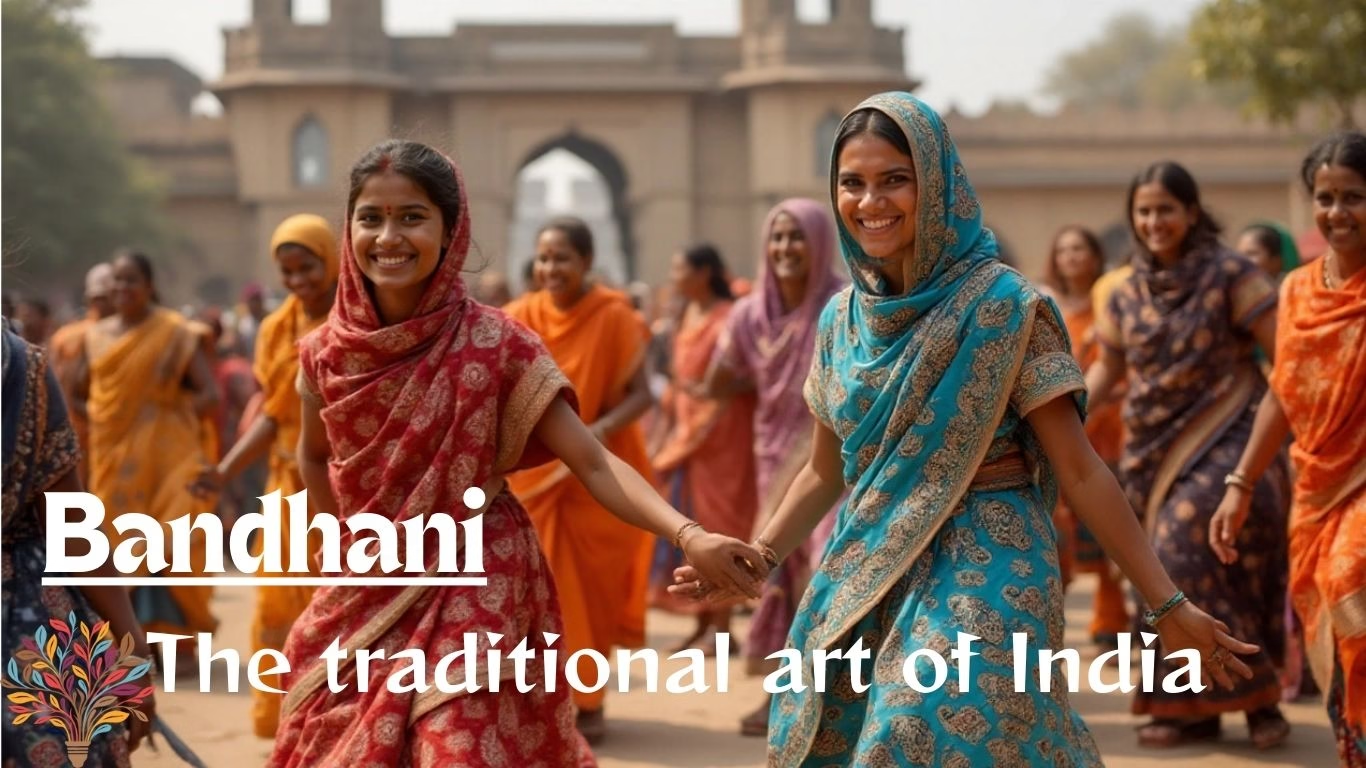
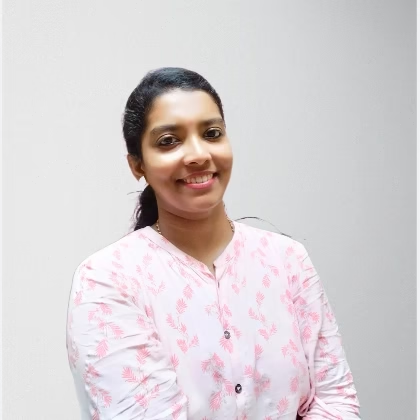
Leave a Reply